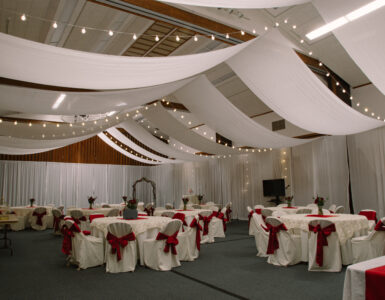By Liana Cannon
We’re about a month into quarantine, and you might need some fresh mom ideas!
For home school or for home fun – here are a few science experiments that will keep your kids entertained.
Dry Erase Tattoos
This experience will wow scientists, young and old. All you need is a glass or ceramic surface (Pyrex pans, plates, bathtubs, etc.) Draw a picture on the surface with a dry erase marker, then cover the drawing with some water (the warmer the better). What happens next is incredible! Your drawing will lift off the surface and float around on the water! You can make little sea creatures dance or scuba divers swim… but wait, it gets better. Not only can you watch your drawings come to life in the water, but you can also stick your hand in and the dry erase substance will stick to your skin like a tattoo!
This works because dry erase markers are mostly made up of alcohol and a release agent made of silicon oils. When you write on the plate or Pyrex dish, the alcohol evaporates and just leaves behind the ink and release agent. We all know that oil and water don’t mix, so the ink with the oils in the release agent just float on top!
Glow Stick Jars
Turn your backyard into a magical fairy garden with this fantastical experiment. Just take a mason jar, cut the ends of a glow stick and dump the contents inside. Use a straw to blow out any remnants, add some glitter, and shake it up. You’ll have a colorful garden of fairy dust! You can grab glow sticks at most dollar stores, and if you can find the emergency glow sticks, you’ll get a brighter glow.
How do glow sticks glow without a bulb or electricity? This is a fun way to learn about chemiluminescence. The glow stick holds two chemical solutions. When you snap it, it breaks a glass vile inside and the two solutions combine. The mixture causes a chemical reaction that excites the atoms and creates energy that emits light. There’s dye mixed into the solutions as well, which gives each glow stick its unique color.
Keep in mind, this experiment is best done with kids old enough to take safety precautions. Ingesting the glow stick liquid can be slightly toxic. It could potentially cause skin irritation and burn your eyes or mouth, so be sure not to inhale with the straw and wear gloves. After trying this experiment with her 11-year-old daughter, mom Maggie Becerra, reports the glow sticks can be difficult to cut through, so don’t get ones that are too thick.
She also advises getting a straw that will fit around the end of the glow stick or that is small enough to fit inside, also pour the glitter in after you pour the glow stick juices in or else it will get absorbed by the glitter and become clumpy!
Slime Ball
Kids love slime! That’s no secret. Here’s a new way to enjoy this obsession.
The common recipe for creating slime is water, borax, and Elmer’s glue. If you can’t find Borox on store shelves right now (thank you, quarantine), here are a few different recipes with supplies you might already have on hand:
For ‘Lava Slime,’ pour 1/4 cup white school glue and a 1/2 cup of cornstarch in a bowl, knead it, and then microwave it for 20 seconds to have it melt like hot lava.
For ‘Gooey Slime,” pour one cup of Elmer’s glue, one tablespoon of baking soda, and one tablespoon of contact lens solution into a bowl. As you knead it, it will become gooey and stretchy, but it will have a bit of a sandy texture.
The Fitzgerald family of Colorado tried ‘Fluffy Slime,’ because shampoo and cornstarch were already staples they had in the home. Just combine half a cup of shampoo and one fourth a cup of cornstarch- the thicker the shampoo, the better. Add one tablespoon of water, stir, and then slowly add five more tablespoons of water, stirring in between. Knead it for five minutes and then play with your little fluffy monster! You can add food coloring to any of these to have some fun colors to play with, and even try adding some glitter for ‘Unicorn Slime.’
Here’s a video of the Fitgerald’s family creation. Be careful on your ratios. Mom Andrea said they put too much corn starch because the slime was so sticky, but then it just became stickier instead of malleable. The next day it just crumbled because it was too dry!
Outdoor S’mores
This simple experiment will make your backyard as good as any campsite. Grab a pizza box, aluminum foil, plastic wrap (or page protectors), clear tape, and black construction paper, and you’ll have yourself your own S’more maker!
Cut a flap in the lid of the pizza box, leaving about an inch border around the edge and cover it and the bottom of the box with aluminum foil- shiny part facing you. Glue black construction paper on top of the foil covering the bottom. Tape the plastic wrap inside the lid over the opening.
On a sunny day, take your little oven outside. Put your graham crackers on the bottom with a piece of chocolate and marshmallow side by side (don’t stack them). Make sure to the foil flap is reflecting the sunlight directly into the box and the roasting will begin!
How can a pizza box be an oven? If you’ve ever worn a black shirt or pants during the summer, you know that the color black makes things hot- and that’s exactly what’s happening inside the box. The foil captures sunlight and reflects it into the box, the black paper retains the heat from the sun, and the plastic wrap creates a barrier so the heat can’t escape. Suddenly the sunlight is cooking your mallows!
Whether it’s a sunny day in your backyard or a rainy day confined to your kitchen, there’s a way to make any day exciting. This quarantine might be just the opportunity you need to explore the mysteries and wonders that surround you and your family. With these simple experiments, a few ingredients from your own home can turn your kitchen into a laboratory of discovery!
Looking for more creative things to do at home? Find Studio 5’s full activity plans here. Click here for a list of free resources.















Add comment